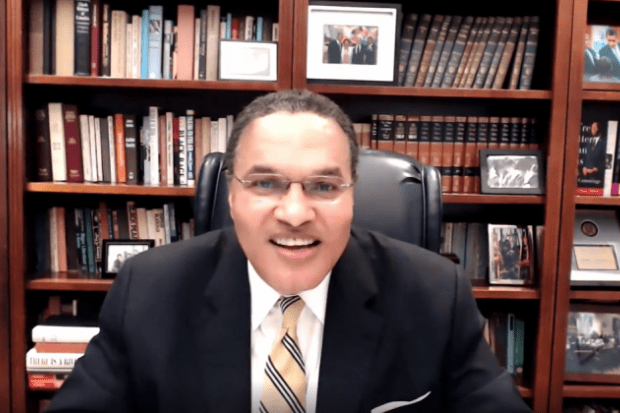The Covid-induced surge in virtual learning will not spawn a “new divide” between students with the means to attend campuses and those stranded online, according to one of America’s foremost experts on educational equity.
Freeman Hrabowski said hybrid instruction techniques had been flourishing since before the pandemic, and it was the experience rather than the mode that mattered.
“We will always have…students who will be in a traditional setting, but the fact is there will be large numbers who will not,” Dr Hrabowski told Times Higher Education’s THE Live US event. “What I’m most concerned about is the quality of the teaching and learning and interaction.
“A professor in literature [told] me that some of the most interesting teaching she’s done in 30 years has come from her living room, with students in their rooms, having conversations on fascinating topics based on the reading. I’ve been amazed at how much nurturing we could do through small group study, town halls and those kinds of things. I think we can improve online instruction and the ways we use the hybrid approach. We’ll find and continue the best parts.”
Dr Hrabowski chaired the commission that advised the White House Initiative on Educational Excellence for African Americans under President Obama, and the National Academies’ committee that produced a 2011 report on Expanding Underrepresented Minority Participation.
The University of Maryland, Baltimore County (UMBC), which he has led for almost 30 years, produces more African American doctoral graduates than most other institutions in the country despite being a predominantly white university. It has eliminated what was a 20-plus percentage point graduation gap between black and white students.
Dr Hrabowski said UMBC had black, white, Asian, Latino and Native Americans students, and it was vital to help them think of themselves as one community. “You know you have true community when students begin to take ownership of the success of their colleagues,” he said.
“One of the biggest challenges in the teaching and learning process involves classes that grade on the curve. If you grade on the curve you’re telling students [they] really shouldn’t work together, because one student scoring a certain level will have some impact on the next student. Practices that tend to push people apart and make [them] more cutthroat are not practices that will help us with academic success.”
Dr Hrabowski said UMBC consciously mixed students of different races in courses and residential halls. “We randomly assign people to groups, so they will get to know each other better, and we have a lot of conversations about differences across groups. We want [them] to learn how to agree to disagree agreeably.
“We’ve got to learn to listen to other points of view and to know people from other countries, other religions, other races, other political points of view. The only way it happens is if we’re deliberate in that approach. We guide the conversation and encourage behaviour that suggests the importance of moving beyond one’s comfort zone.”




